Shopping cart abandonment is a major challenge for eCommerce businesses. Despite investing heavily in attracting potential buyers, many businesses see a significant percentage of shoppers leaving their carts before completing a purchase.
This issue translates to lost revenue, increased customer acquisition costs, and lower conversion rates. Understanding the psychological reasons behind last-minute cart abandonment is crucial to implementing effective strategies to prevent it. This post explores these psychological barriers and provides actionable solutions to minimize drop-offs.
A study by Baymard Institute found that nearly 70% of online shopping carts are abandoned, representing a significant loss in potential sales. However, businesses that implement effective cart recovery strategies have been able to recover up to 30% of lost sales. The key to reducing shopping cart abandonment lies in understanding customer behavior and addressing the common pain points that deter purchases.
The Psychology Behind Last-Minute Cart Abandonment
1. Fear of Commitment
Many shoppers hesitate at checkout due to commitment anxiety. They may fear making the wrong purchase decision or worry about experiencing buyer’s remorse afterward.
- Loss Aversion: People tend to fear losing money more than they enjoy gaining something new.
- Regret Anticipation: Consumers may hesitate if they are uncertain about the value of the product or if they believe they might find a better deal elsewhere.
- Cognitive Dissonance: Shoppers may struggle to justify their purchase, especially if they feel conflicted about the price, product quality, or necessity of the item.
Fear of commitment is particularly prevalent with high-ticket items, as customers want to be absolutely sure of their decision before making a significant financial investment. A lack of customer support options, such as live chat assistance or detailed product FAQs, can further intensify uncertainty, leading customers to abandon their carts.
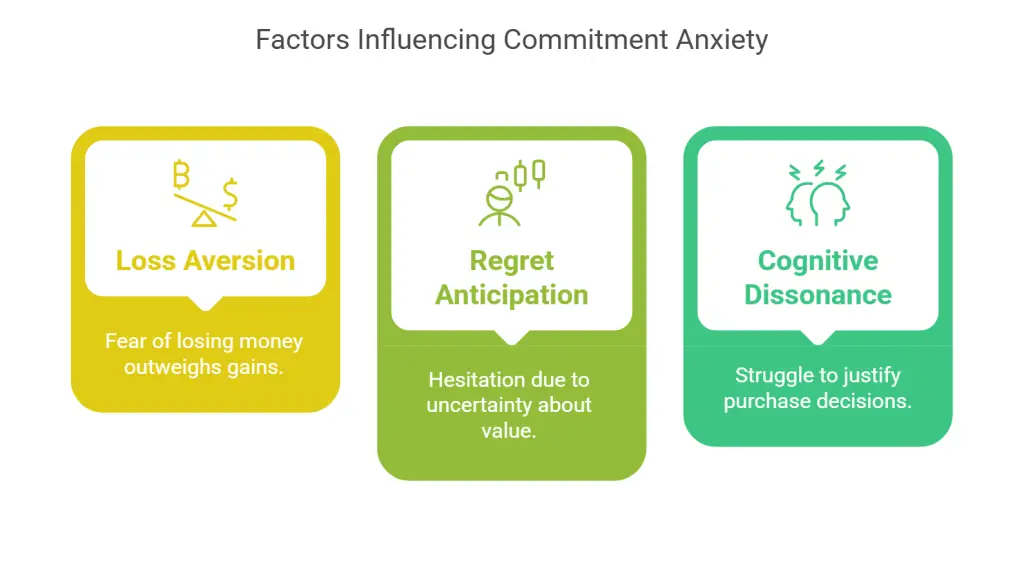
Solution:
- Offer hassle-free returns and money-back guarantees to ease concerns.
- Highlight customer reviews and testimonials to reassure hesitant buyers.
- Use limited-time discounts to create urgency and push decision-making forward.
- Provide a comparative analysis of similar products to help buyers feel confident in their choice.
- Enable live chat support or AI-powered chatbots to answer last-minute concerns and guide customers to completion.
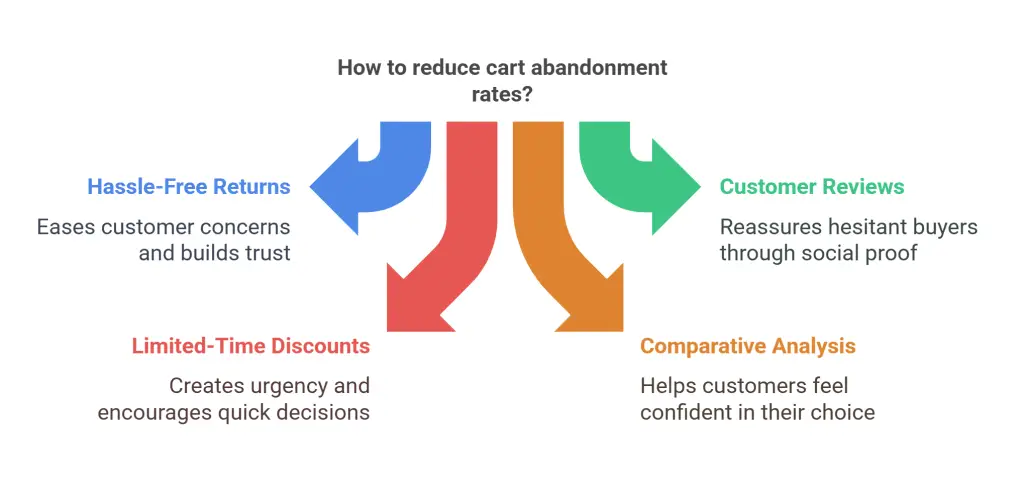
2. Unexpected Costs & Sticker Shock
Many shoppers abandon their carts when they encounter unexpected fees, such as shipping costs, taxes, or processing fees, which disrupt their price expectations.
- Pricing Psychology: Sudden cost increases can lead to negative emotions that override the purchase impulse.
- Sunk Cost Fallacy: If the perceived added costs outweigh the effort already put into shopping, consumers may walk away.
- Budget Constraints: Many shoppers work within a set budget, and unexpected costs may exceed their planned spending.
When customers perceive the final checkout amount to be higher than expected, they often pause and reconsider the purchase, especially if they can find a similar product elsewhere at a lower price. Many retailers have found that displaying shipping fees upfront or offering free shipping above a threshold amount significantly reduces this hesitation.
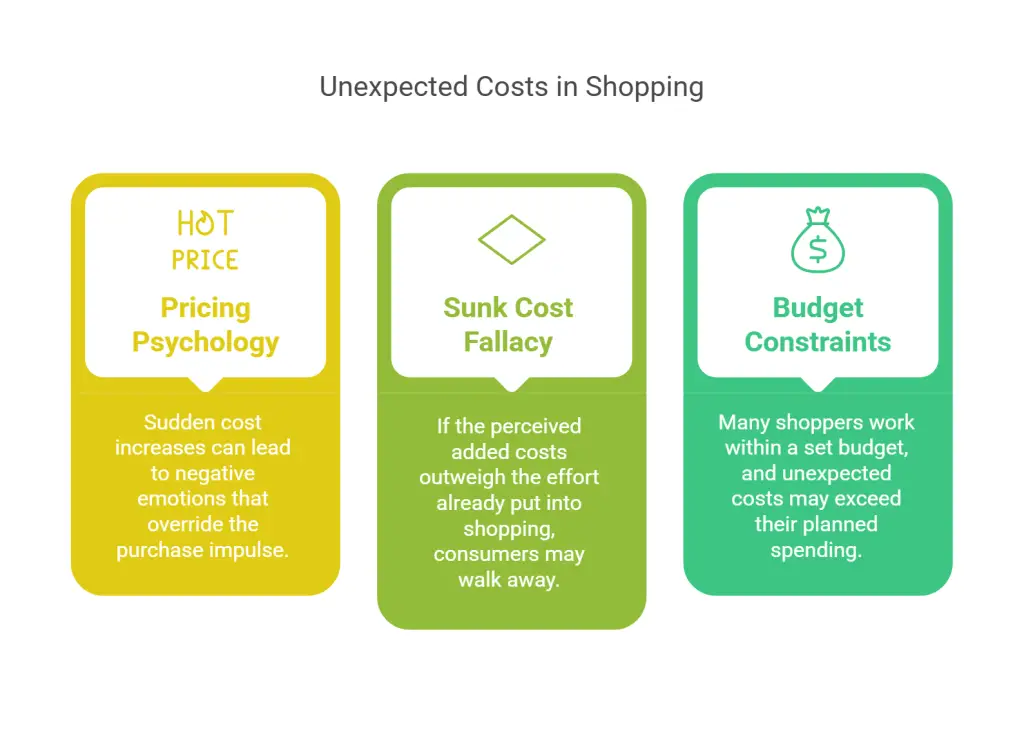
Solution:
- Be transparent about costs early in the shopping process.
- Offer free shipping incentives or bundle products to absorb costs.
- Use psychological pricing strategies like tiered pricing to make costs feel more manageable.
- Display clear cost breakdowns so customers know exactly what they’re paying for before reaching checkout.
- Provide installment payment options for expensive items to ease financial pressure.
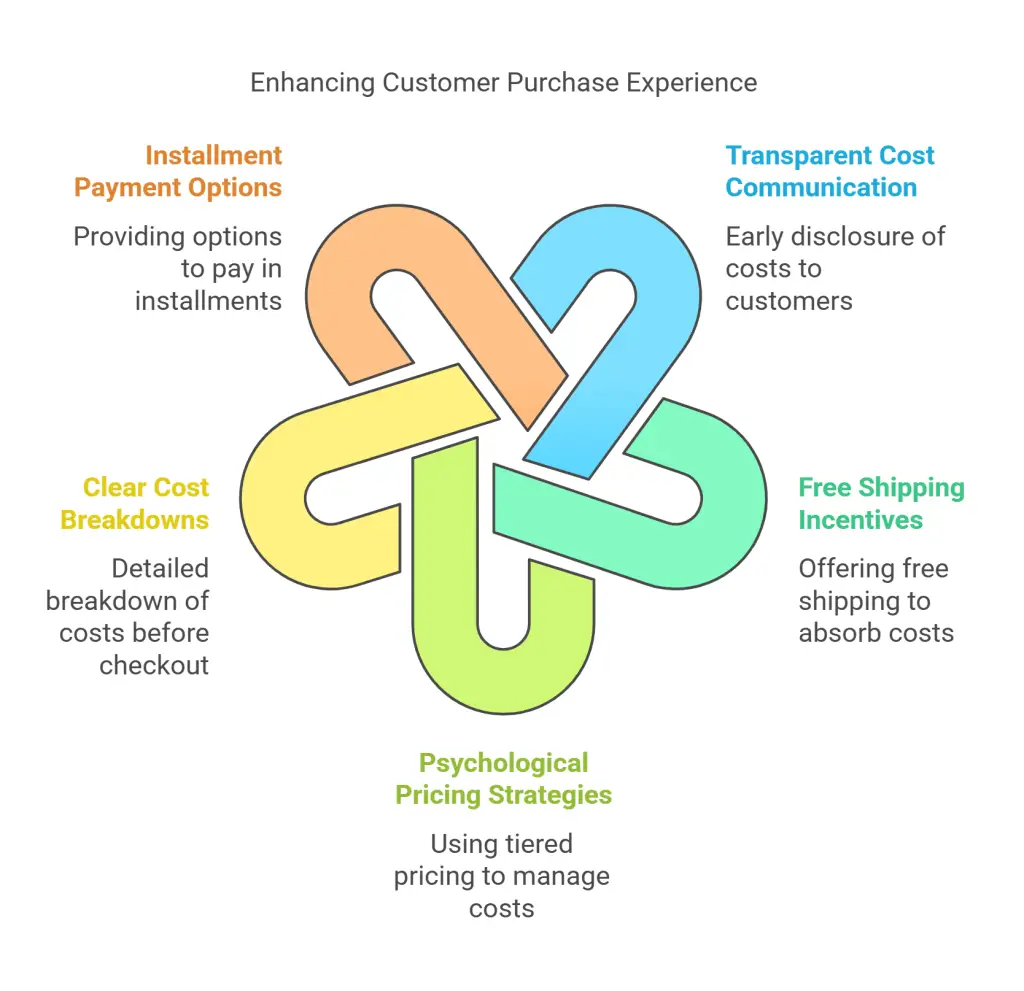
3. Decision Fatigue & Overwhelm
A complicated checkout process with too many options can overwhelm shoppers, leading to analysis paralysis.
- Excessive choices (e.g., multiple payment options, add-ons, and shipping methods) can make decision-making more difficult.
- Too many checkout steps increase cognitive load, making shoppers more likely to abandon their carts.
- Doubt about necessity—Customers may question whether they truly need the product when forced to make too many choices.
Retailers often unknowingly introduce barriers to conversion by including unnecessary steps, such as forcing account creation, requiring excessive information, or pushing last-minute upsells. This added friction can turn an otherwise smooth checkout process into a frustrating experience.
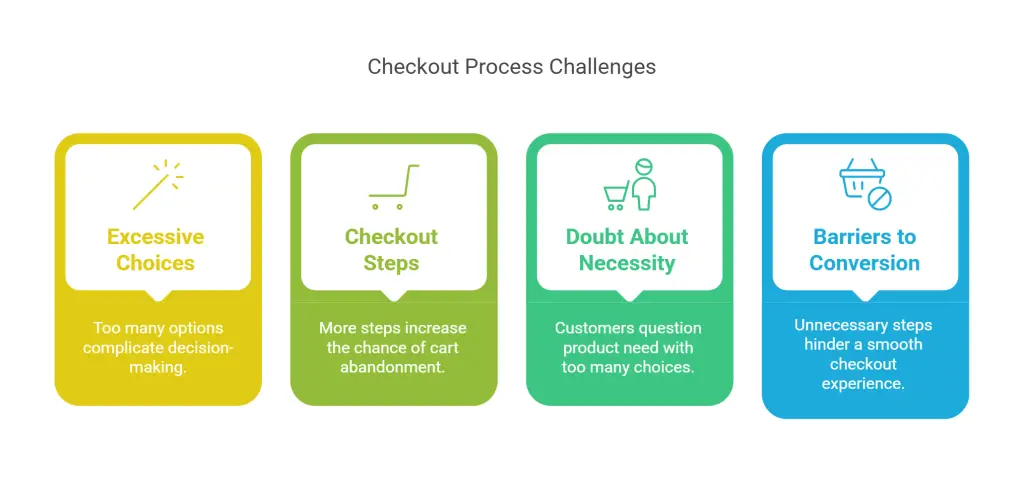
Solution:
- Streamline the checkout process by reducing form fields and simplifying steps.
- Offer a guest checkout option to speed up the process.
- Use auto-fill features and save customer preferences for returning buyers.
- Implement one-click checkout to minimize distractions and improve conversion rates.
- Provide progress indicators to help customers see how close they are to completing their purchase.
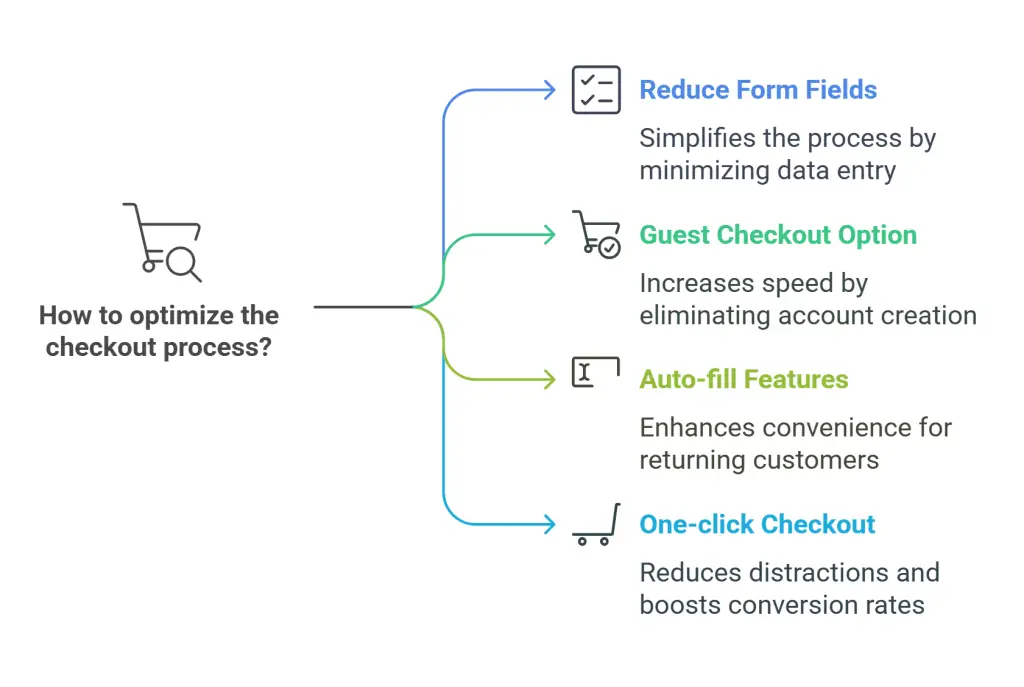
4. Trust Issues & Security Concerns
Consumers hesitate if they perceive a risk of fraud, data breaches, or hidden fees.
- Lack of trust signals such as SSL certificates, well-known payment gateways, or verified reviews can deter purchases.
- Skepticism about return policies or refund guarantees can create hesitation.
- Negative online reviews or lack of brand presence can make potential customers doubtful about the credibility of a store.
E-commerce fraud is a growing concern, and many shoppers will only buy from websites they trust. Businesses that fail to address these concerns risk losing sales even if their product and pricing are competitive.
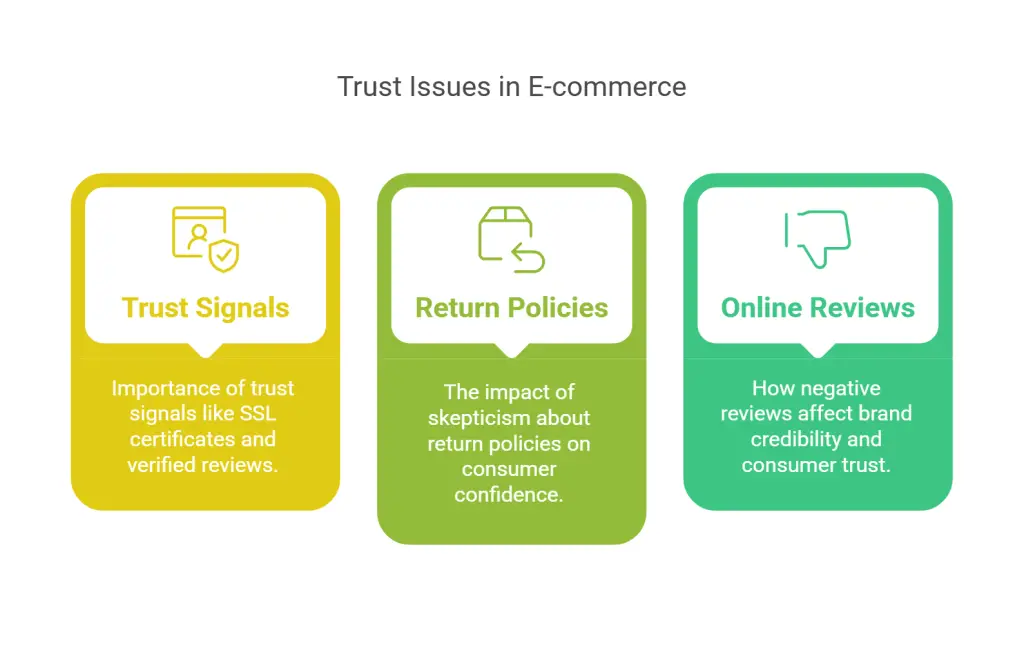
Solution:
- Display security badges, trusted payment options, and SSL encryption logos at checkout.
- Highlight customer reviews and social proof to reinforce credibility.
- Offer clear refund and return policies to build consumer trust.
- Provide third-party certifications to demonstrate website security and reliability.
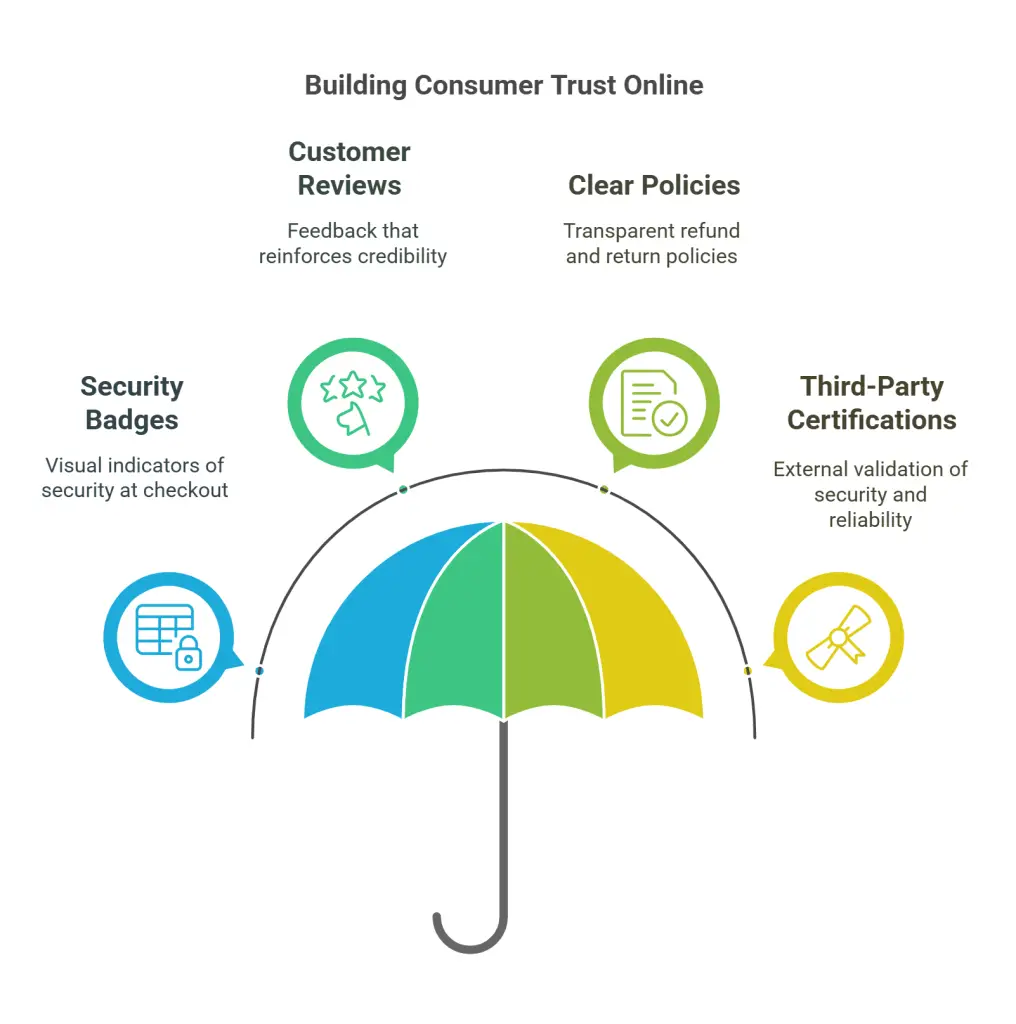
Case Study: How Harper’s Home Decor Reduced Cart Abandonment by 35%
Harper Reed, the owner of Harper’s Home Decor, noticed a troubling pattern in her online store’s analytics—68% of potential customers were abandoning their carts before completing their purchase. Determined to turn this around, she implemented a strategy that significantly improved her store’s conversion rate.

Identifying the Problem
Harper discovered that customers were dropping off primarily due to the following reasons:
- Unexpected shipping costs that created sticker shock.
- A complex checkout process with too many form fields.
- Limited payment options causing frustration among buyers.
- Lack of trust signals, leaving potential buyers hesitant to enter payment details.
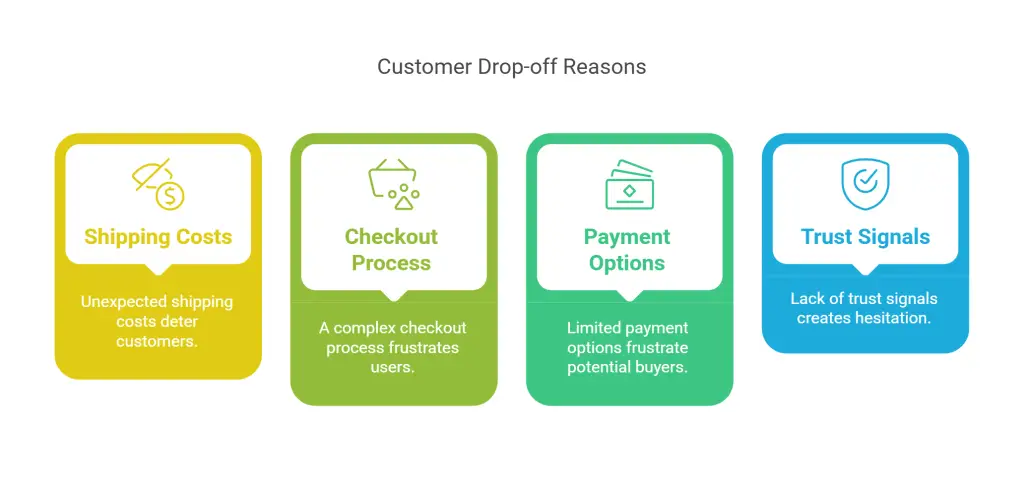
The Strategy: Fixing the Friction Points
To address these barriers, Harper made the following critical changes:
- Upfront cost transparency: Shipping fees were displayed early in the shopping process, and she introduced a free shipping threshold ($75+ orders).
- Checkout simplification: She reduced the number of form fields by 30%, making the process quicker and smoother.
- Flexible payment methods: She integrated Buy Now, Pay Later (BNPL) options like Afterpay and Klarna to give customers more choices.
- Building trust: Harper added security badges, customer reviews at checkout, and a prominent money-back guarantee to reassure hesitant buyers.
- Personalized follow-ups: She set up automated email and SMS reminders for customers who abandoned their carts, offering a small incentive (like a 10% discount or free shipping) to complete their purchase.
- Optimized mobile checkout: Recognizing that over 60% of her traffic came from mobile users, she ensured that the checkout process was fast-loading, mobile-friendly, and distraction-free.
The Results
Harper’s efforts led to a remarkable improvement in her store’s performance:
- Cart abandonment rate decreased from 68% to 44% in just three months.
- Higher average order value (AOV) as customers aimed to meet the free shipping threshold.
- 82% of surveyed customers stated they trusted the brand more due to the visible trust signals.
- Recovery emails saw a 20% conversion rate, proving the effectiveness of well-timed, personalized follow-ups.
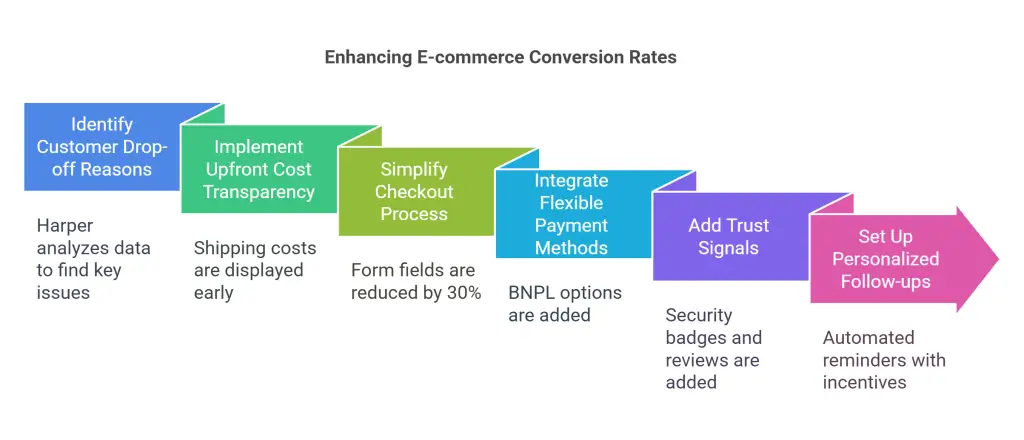
Recovering Lost Sales with Abandoned Cart Emails & Retargeting
Shopping cart abandonment doesn’t necessarily mean a lost sale. With well-planned recovery strategies, businesses can successfully convert hesitant shoppers into paying customers. Many online retailers have found that an effective cart recovery strategy can help recover up to 30% of abandoned transactions, leading to substantial revenue gains.
The Power of Abandoned Cart Emails
Abandoned cart emails remain one of the most effective ways to recover lost sales. These emails serve as gentle reminders to customers who left items in their cart without completing the purchase.
Best Practices for Cart Recovery Emails:
- Timely Follow-ups: Send the first email within one hour of cart abandonment, a second reminder within 24 hours, and a final follow-up within 48 hours.
- Personalization: Include the shopper’s name and details of the abandoned items to make the email feel more tailored.
- Incentives & Discounts: Offer limited-time discounts, free shipping, or special promotions to encourage conversion.
- Urgency & FOMO: Use subject lines like “Hurry! Your Cart is Expiring Soon!” or “Limited Stock Alert!” to create urgency.
- Clear Call-to-Action (CTA): Use a strong CTA like “Complete Your Purchase Now” with a direct link to the checkout page.
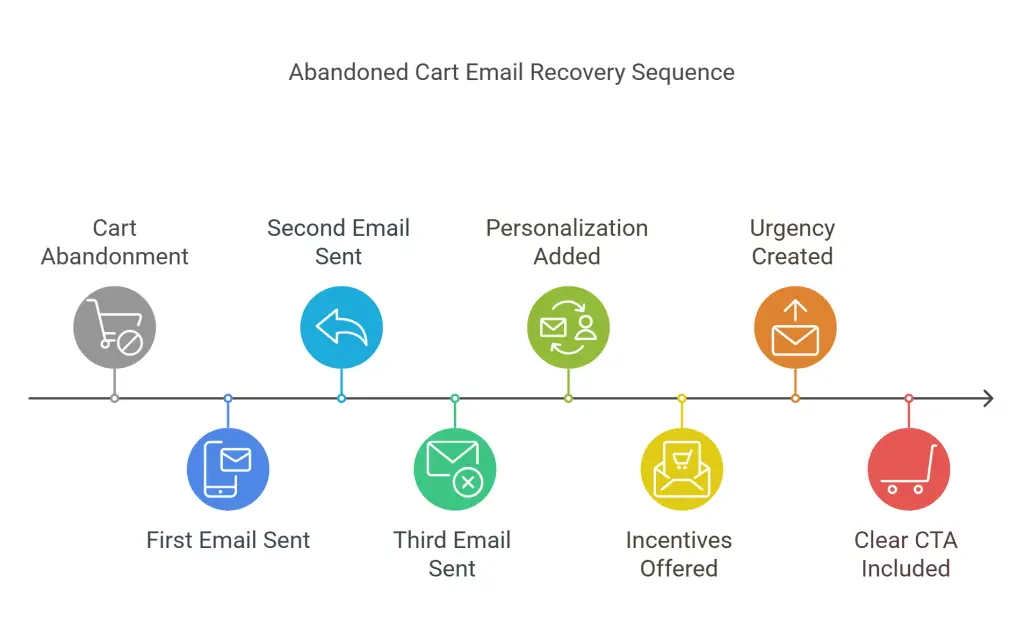
Retargeting Ads to Win Back Lost Shoppers
Retargeting is another powerful tool to bring back potential customers. By using Facebook Pixel, Google Ads, and dynamic product ads, businesses can display personalized ads to shoppers who left items in their cart.
Effective Retargeting Strategies:
- Dynamic Retargeting Ads: Show customers exactly what they left in their cart to reinforce their purchase decision.
- Multi-Channel Retargeting: Use a mix of social media ads, display ads, and email reminders to increase touchpoints.
- Exclusive Offers for Return Shoppers: Create ads with time-sensitive discounts, free shipping, or bundled deals.
- A/B Testing: Experiment with different ad creatives, messaging, and CTAs to find what resonates best with your audience.
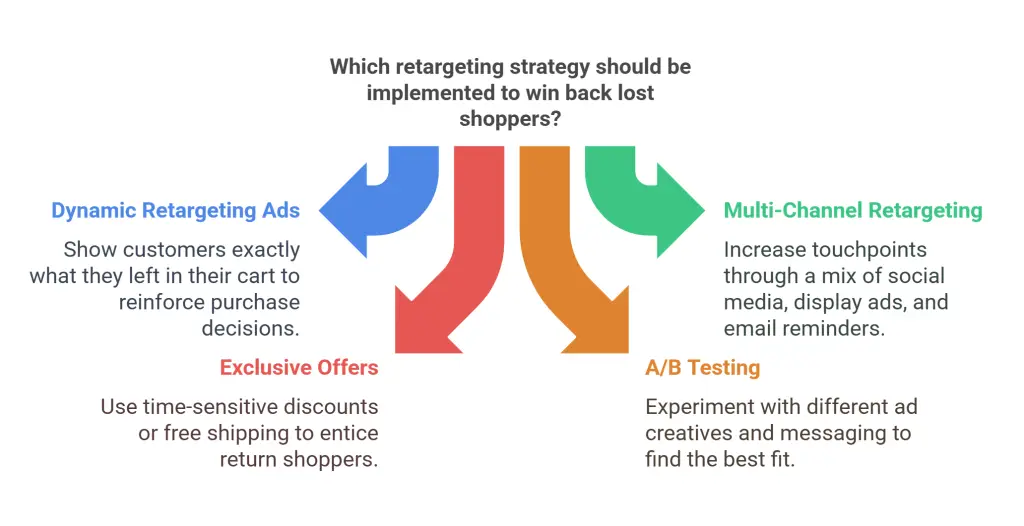
Leveraging SMS & Push Notifications for Cart Recovery
For mobile shoppers, SMS reminders and push notifications can be an effective way to drive conversions.
Best Practices for SMS & Push Notifications:
- Short & Direct Messaging: Keep it concise, such as “You left something behind! Click here to complete your order.”
- Include an Incentive: Offering an exclusive discount for completing the purchase within a set timeframe.
- Trigger-Based Messaging: Send notifications when a user returns to the site but hasn’t checked out.

Using AI-Driven Recommendations for Personalized Recovery
AI-driven product recommendations help recover sales by suggesting related or complementary products to users who abandoned their cart.
How AI Helps Reduce Cart Abandonment:
- Personalized Email Suggestions: Recommending items similar to what the shopper was interested in.
- Chatbot Assistance: AI-powered chatbots can engage customers in real-time and assist them in completing their purchase.
- Predictive Discounts: AI can determine the best discount to offer based on customer behavior and past purchases.
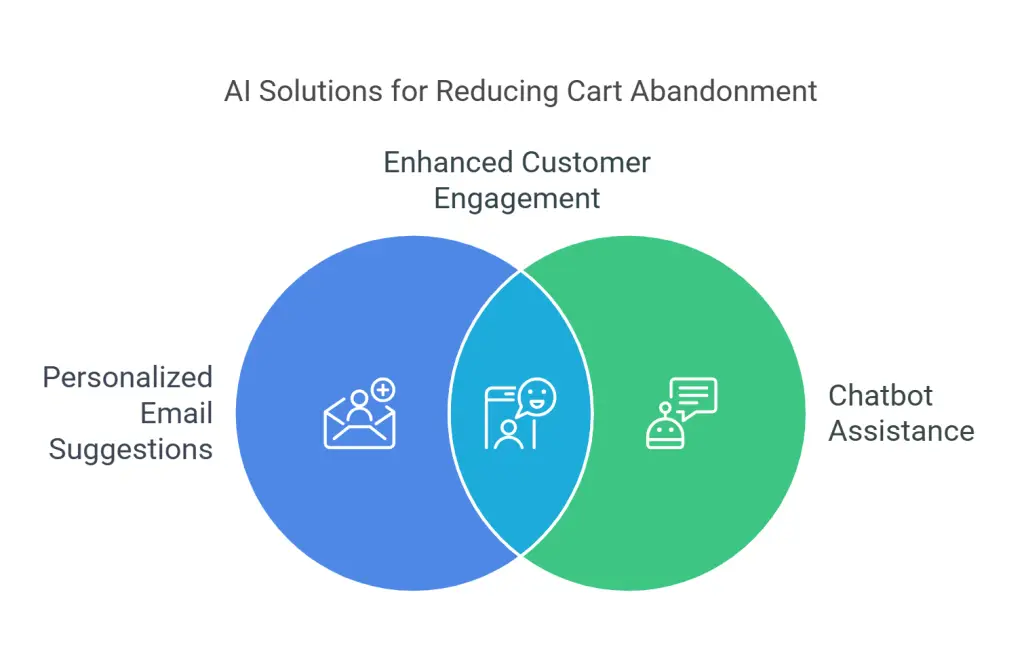
Exit-Intent Popups to Capture Last-Minute Buyers
Exit-intent popups trigger when a customer is about to leave the checkout page, offering a final incentive to encourage purchase completion.
Best Practices for Exit-Intent Popups:
- Exclusive Discounts: Offer a last-minute 10-15% discount to entice users to complete their purchase.
- Urgency Tactics: Use countdown timers or messages like “Complete your order now before the deal expires!”
- One-Click Checkout Option: Simplify the checkout process with an easy payment option.
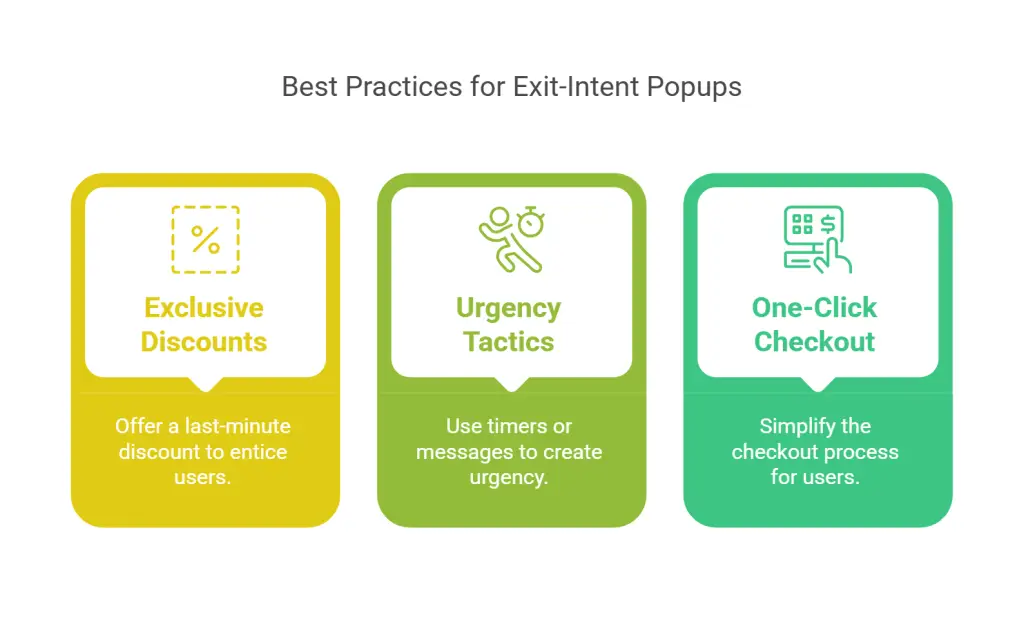
Analyzing Checkout Behavior to Improve Recovery Strategies
Studying customer behavior at checkout provides valuable insights into why shoppers abandon their carts.
Key Metrics to Track:
- Cart Abandonment Rate: Understand the percentage of shoppers leaving without completing their purchase.
- Checkout Funnel Drop-off Points: Identify which step in the checkout process is causing friction.
- Conversion Rate of Recovery Emails & Ads: Track the effectiveness of retargeting and abandoned cart emails.
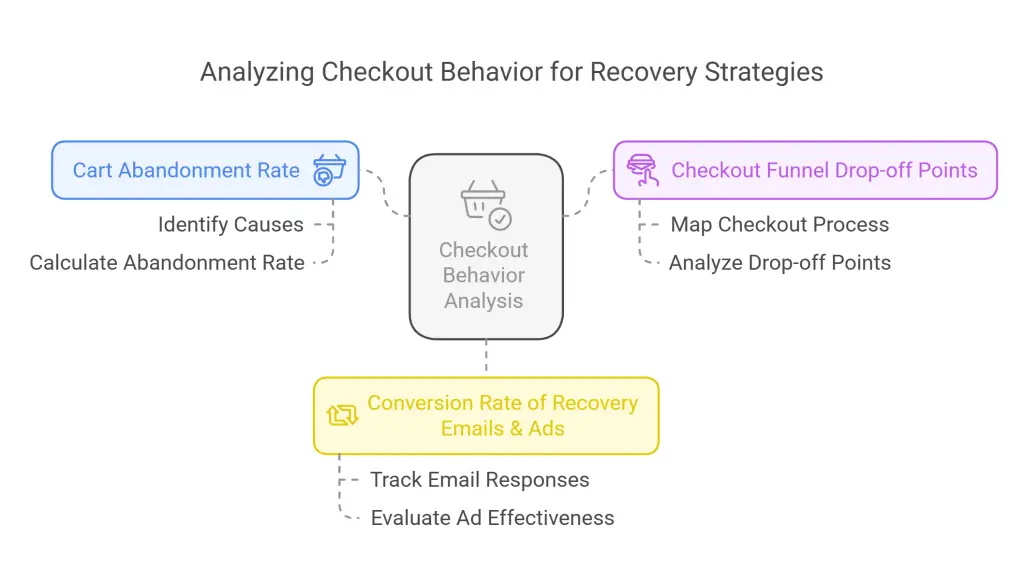
By implementing these strategies, businesses can significantly reduce shopping cart abandonment and recover lost sales, leading to higher revenue and better customer retention.
Conclusion
Shopping cart abandonment is a costly challenge, but businesses can reduce its impact by understanding the psychological triggers behind it. Addressing issues like fear of commitment, unexpected costs, decision fatigue, and security concerns can significantly improve conversion rates.
By optimizing the checkout process, ensuring transparency, and leveraging retargeting strategies, businesses can recover lost sales and build lasting customer trust. Start implementing these strategies today to see a tangible improvement in your eCommerce success.
Frequently Asked Questions
What is shopping cart abandonment?
Shopping cart abandonment occurs when online shoppers add items to their cart but leave the website without completing the purchase.
Why do customers abandon their shopping carts?
Common reasons include unexpected costs, complicated checkout processes, lack of trust in the site, or simply browsing without intent to buy.
How does fear of commitment affect cart abandonment?
Shoppers may hesitate due to uncertainty about the purchase, potential buyer’s remorse, or concerns about product value, leading them to abandon their carts.
What role do unexpected costs play in cart abandonment?
Unexpected fees like shipping, taxes, or processing charges can deter customers, causing them to abandon their carts when the final price exceeds expectations.
How can businesses reduce shopping cart abandonment rates?
Strategies include transparent pricing, simplifying the checkout process, offering guest checkout options, providing multiple payment methods, and ensuring website security to build trust.
Further reading
Shopify. “Shopping Cart Abandonment: Why It Happens and How to Fix It.” Shopify Blog. Last modified February 20, 2025. Accessed February 20, 2025. https://www.shopify.com/au/blog/shopping-cart-abandonment.
BigCommerce. “What Is Shopping Cart Abandonment? Definition, Causes, & Tips to Reduce It.” BigCommerce Blog. Last modified February 20, 2025. Accessed February 20, 2025. https://www.bigcommerce.com.au/articles/ecommerce/abandoned-carts/.
Stripe. “What Is Cart Abandonment?” Stripe Resources. Last modified February 20, 2025. Accessed February 20, 2025. https://stripe.com/au/resources/more/what-is-cart-abandonment.
Neil Patel. “How to Recover Abandoned Carts (And Boost Your Sales).” YouTube Video, 2023. Accessed February 20, 2025. https://www.youtube.com/watch?v=6DmzOohvEYI.
Klaviyo. “Cart Abandonment Emails: The Right Way to Recover Sales.” YouTube Video, 2023. Accessed February 20, 2025. https://www.youtube.com/watch?v=cq6iLRDdOq4.
WordStream. “Shopping Cart Abandonment: Why Shoppers Leave & How You Can Win Them Back.” WordStream Blog, March 17, 2016. Accessed February 20, 2025. https://www.wordstream.com/blog/ws/2016/03/17/shopping-cart-abandonment.
Geckoboard. “Shopping Cart Abandonment Rate.” Geckoboard KPI Examples. Last modified February 20, 2025. Accessed February 20, 2025. https://www.geckoboard.com/best-practice/kpi-examples/shopping-cart-abandonment-rate/.







